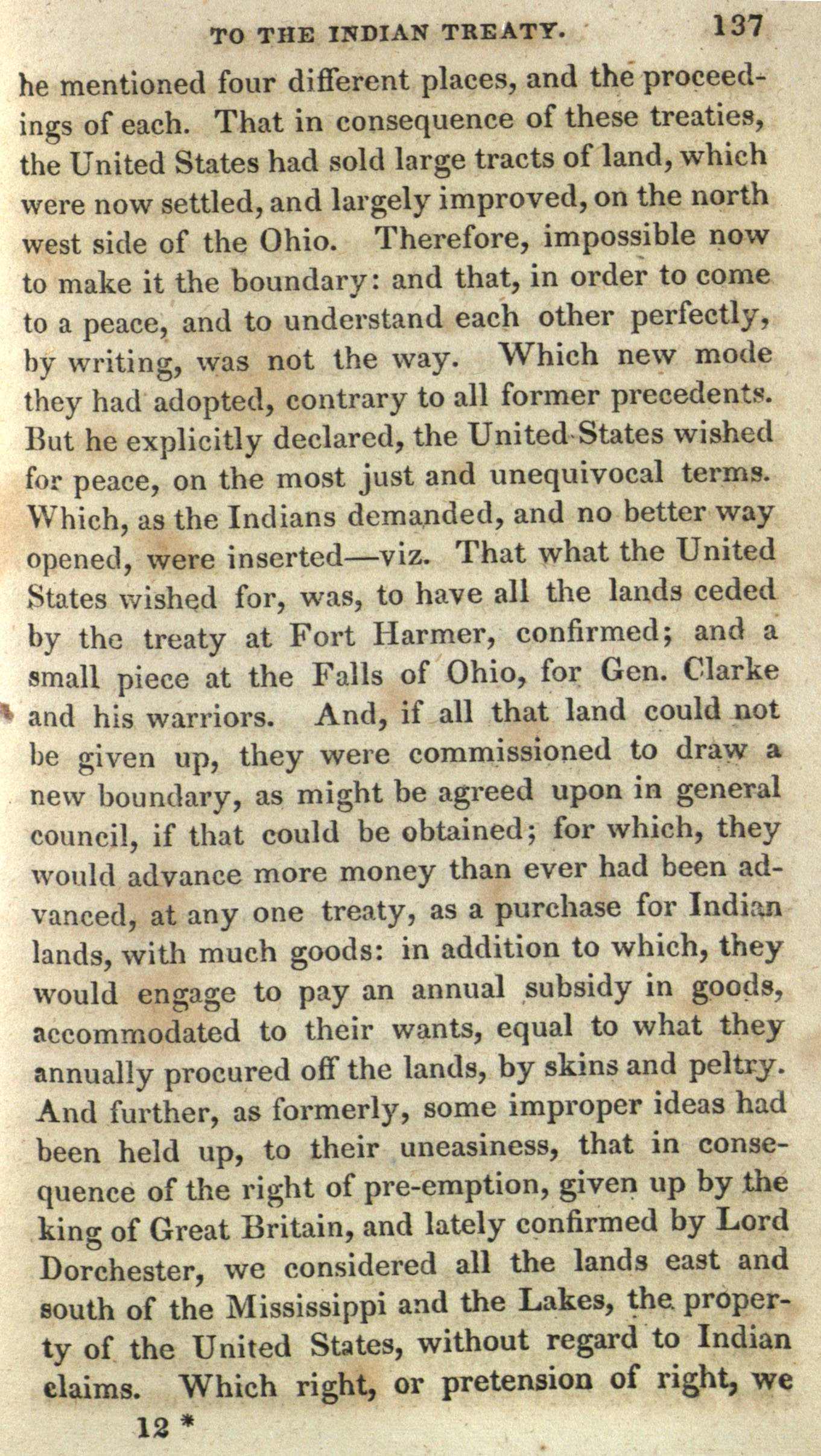he mentioned four different places, and the
proceed-
ings of each. That in consequence of these treaties,
the United
States had sold large tracts of land, which
were now settled, and largely
improved, on the north
west side of the Ohio. Therefore, impossible now
to make it the boundary: and
that, in order to come
to a peace, and to understand each other
perfectly,
by writing, was not the way. Which new mode
they had
adopted, contrary to all former precedents.
But he explicitly declared, the
United States wished
for peace, on the most just and unequivocal terms.
Which, as the Indians demanded, and no better way
opened, were inserted —
viz. That what the United
States wished for, was, to have all the lands
ceded
by the treaty at Fort Harmer,
confirmed; and a
small piece at the Falls of
Ohio, for Gen. Clarke
and
his warriors. And, if all that land could not
be given up, they were
commissioned to draw a
new boundary, as might be agreed upon in
general
council, if that could be obtained; for which, they
would
advance more money than ever had been ad-
vanced, at any one treaty, as a
purchase for Indian
lands, with much goods: in addition to which,
they
would engage to pay an annual subsidy in goods,
accommodated to
their wants, equal to what they
annually procured off the lands, by skins
and peltry.
And further, as formerly, some improper ideas had
been held
up, td their uneasiness, that in conse-
quence of the right of pre-emption,
given up by the
king of Great Britain, and lately confirmed by
Lord
Dorchester, we considered all the lands east and
south of the
Mississippi and the Lakes, the
proper-
ty of the United States, without regard to Indian
claims. Which
right, or pretension of right, we

